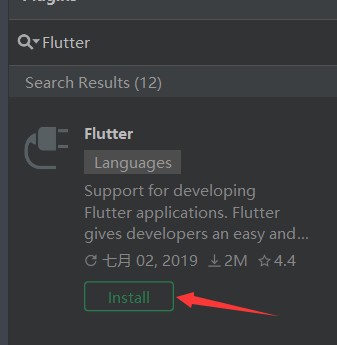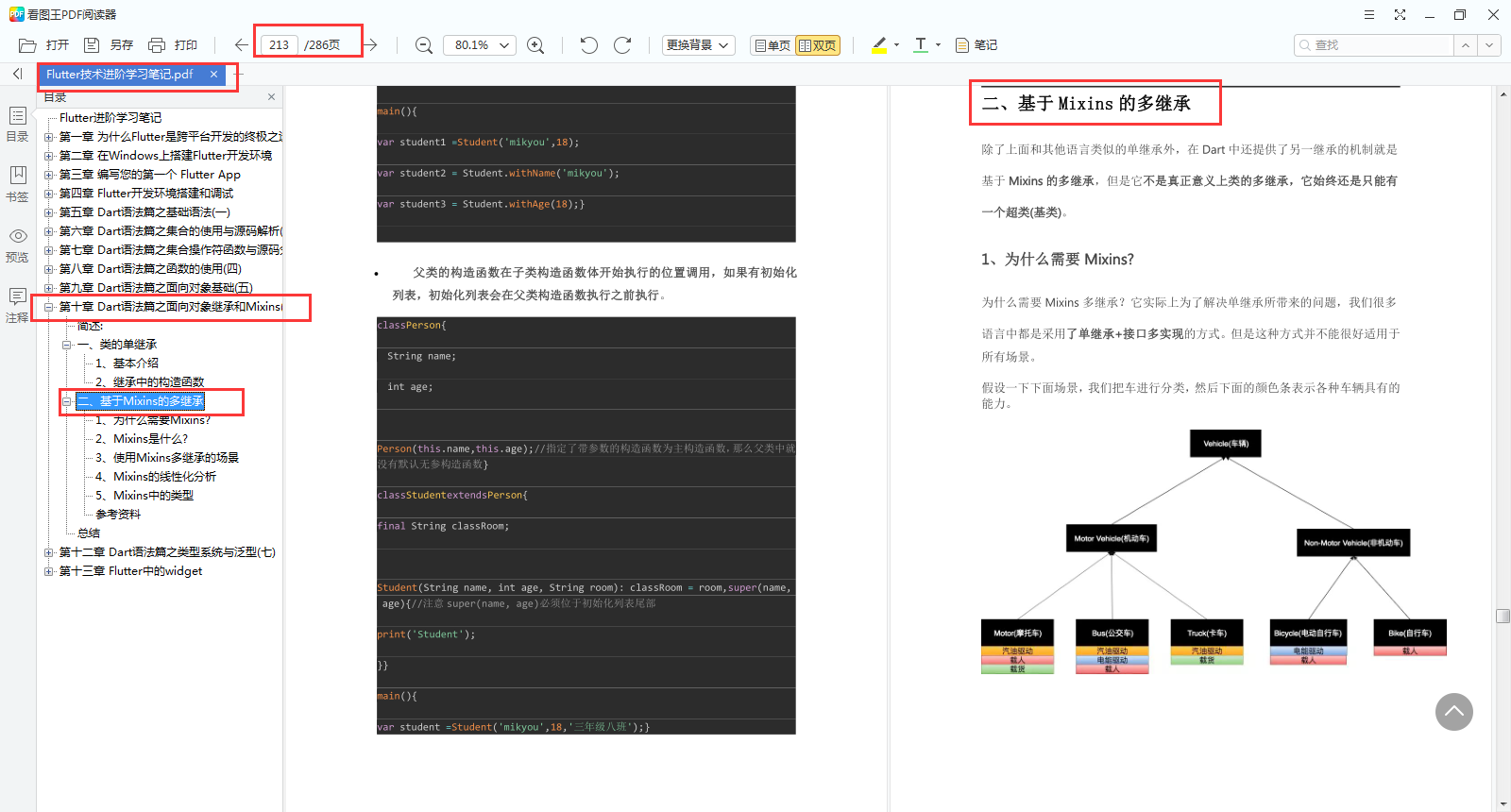本文共 2620 字,大约阅读时间需要 8 分钟。

前言
或许还有很多搞移动开发的朋友还没有安装Flutter,或者是不知道怎么安装,现在博主给大家分享一篇大佬整理的超详细的Flutter安装入门教程。
原文地址:https://www.jianshu.com/p/a9ff23f96305
Flutter是谷歌的移动UI框架,可以快速在iOS和Android上构建高质量的原生用户界面。 Flutter可以与现有的代码一起工作。在全世界,Flutter正在被越来越多的开发者和组织使用,并且Flutter是完全免费、开源的。
我本人也是非常安好Flutter,所以也进入到了Flutter学习行列啦,今天主要讲一下Flutter的安装,具体包括:
-
Flutter需要配置的工具
-
Flutter SDK下载
-
Flutter环境变量的配置
-
插件安装(Fultter与Dart)
-
创建一个Flutter项目
Flutter工具配置
1. Git
我们需要下载Git
直接去Git官网配置,地址: https://git-scm.com2.Android开发工具:Android Studio下载
下载地址: https://developer.android.google.cn/studio/Futter SDK下载
使用Git克隆仓库下载,找一个全英文路径(无空格)点击右键找到Git Bash

输入下面命令:
git clone -b master https://github.com/flutter/flutter.git
注意,其中的master代表的是分支

环境变量配置
这里以WIN10为例:
右键点击我的电脑—>属性—>高级系统设置—>环境变量—>双击path—>编辑文本
在后面以";"号隔开添加flutter路径

成功之后在终端窗口输入:
flutter docator
如果提示错误,可以重启一下机器,再次尝试
然后就会出现下面所示的内容:

显示我们的Flutter插件与Dart 插件没有安装 ,这个是正常的 !
插件安装(Fultter与Dart)
以开发工具Android Studio为例:
Flutter插件
点击Android Studio —> File —> Settings —> Plugins

Dart插件 同理
创建一个Flutter项目
File—>New—>New Flutter Project

然后输入项目名称等等信息,就创建成功了


除了安装教程,这里给大家免费分享一套Flutter的学习资料,感兴趣的朋友可以
Flutter进阶学习笔记
整理大纲
- 为什么Flutter是跨平台开发的终极之选
- 在Windows上搭建Flutter开发环境
- 编写您的第一个 Flutter App
- Flutter开发环境搭建和调试
- Dart语法篇之基础语法(一)
- Dart语法篇之集合的使用与源码解析(二)
- Dart语法篇之集合操作符函数与源码分析(三)
- Dart语法篇之函数的使用(四)
- Dart语法篇之面向对象基础(五)
- Dart语法篇之面向对象继承和Mixins(六)
- Dart语法篇之类型系统与泛型(七)
- Flutter中的widget

为什么Flutter是跨平台开发的终极之选
- 这是为什么?
- 跨平台开发
- 什么是 Flutter
- Flutter 的特性
- Flutter 构建应用的工具
- 使用 Flutter 构建的热门应用
- 构建 Flutter 应用的成本
- ……

在Windows上搭建Flutter开发环境
- 使用镜像
- 系统要求
- 获取Flutter SDK
- 编辑器设置
- Android设置
- 起步: 配置编辑器
- 起步: 体验
- 体验热重载
- 创建新的应用
- 运行应用程序
- ……

第三章 编写您的第一个 Flutter App
- 第1步: 创建 Flutter app
- 第2步: 使用外部包(package)
- 第3步: 添加一个 有状态的部件(Stateful widget)
- 第4步: 创建一个无限滚动ListView
- 第5步: 添加交互
- 第6步: 导航到新页面
- 第7步:使用主题更改UI
- ……

第四章 Flutter开发环境搭建和调试
- 开发环境的搭建
- 模拟器的安装与调试
- 开发环境的搭建
- 模拟器的安装与调试
- ……

第五章 Dart语法篇之基础语法(一)
- Hello Dart
- 数据类型
- 变量和常量
- 集合(List、Set、Map)
- 流程控制
- 运算符
- 异常
- 函数
- ……

第六章 Dart语法篇之集合的使用与源码解析(二)
- List
- Set
- Map
- Queue
- LinkedList
- HashMap
- Map、HashMap、LinkedHashMap、SplayTreeMap区别
- 命名构造函数from和of的区别以及使用建议
- ……

第七章 Dart语法篇之集合操作符函数与源码分析(三)
- Iterable(Iterable类关系图、Iterable类方法图……)
- forEach(介绍、使用方式、源码解析……)
- map(介绍、使用方式、源码解析……)
- any(介绍、使用方式、源码解析……)
- every(介绍、使用方式、源码解析……)
- where(介绍、使用方式、源码解析……)
- firstWhere和singleWhere和lastWhere(介绍、使用方式、源码解析……)
- join(介绍、使用方式、源码解析……)
- take(介绍、使用方式、源码解析……)
- takeWhile(介绍、使用方式、源码解析……)
- ……(内容太多)

第八章 Dart语法篇之函数的使用(四)
- 函数参数
- 匿名函数(闭包,lambda)
- 箭头函数
- 局部函数
- 顶层函数和静态函数
- main函数
- ……

第九章 Dart语法篇之面向对象基础(五)
- 属性访问器(accessor)函数setter和getter
- 面向对象中的变量
- 构造函数
- 抽象方法、抽象类和接口
- 类函数
- ……

第十章 Dart语法篇之面向对象继承和Mixins(六)
- 类的单继承
- 基于Mixins的多继承
- ……

第十一章 Dart语法篇之类型系统与泛型(七)
- 可选类型
- 接口类型
- 泛型
- 类型具体化
- ……

第十二章 Flutter中的widget
- Flutter页面-基础Widget
- Widget
- StatelessWidget
- Stateful Widget
- State生命周期
- 基础widget
- 文本显示
- ……

转载地址:http://pxxxz.baihongyu.com/